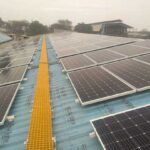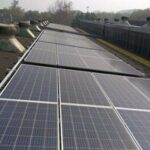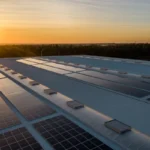How Quickly Can Solar Panels Pay for Themselves? Payback Period Explained
How Quickly Can Solar Panels Pay for Themselves? Payback Period Explained
One of the first questions people ask before going solar is: “How long will it take to recover my investment?” This is where the payback period comes in. Simply put, the payback period is the time it takes for the money you save on electricity bills to equal the total cost of your solar panel system.
In India, due to the rising electricity tariffs and government subsidies, the payback period has become shorter than ever. Whether you are a homeowner or running a commercial & industrial (C&I) setup, solar energy today offers a very attractive return on investment (ROI).
In this blog, we’ll break down the concept of the solar payback period, compare household and C&I installations, and explain why solar is a smart financial move in 2025.
What is the Payback Period in Solar?
The payback period refers to the time taken to recover the upfront investment in solar panels through savings on electricity bills. For example, if you spend ₹3 lakh on a solar system and save ₹60,000 annually on electricity, your payback period will be around 5 years.
Key factors that influence the payback period include:
- System size (kW capacity)
- Installation cost
- Electricity tariff in your state
- Government subsidies or incentives
- Usage patterns (daytime vs nighttime consumption)
Once the payback period is over, the electricity generated is virtually free, apart from small maintenance costs. Considering that solar panels last for 25 years or more, the returns after payback are huge.
Payback Period for Household Solar Installations
For residential rooftop systems, the payback period in India typically ranges between 3 and 6 years, depending on state tariffs and subsidies.
Why Household Solar Pays Back Faster:
- Government Subsidies: Under the PM Surya Ghar: Muft Bijli Yojana, households can get up to ₹78,000 subsidy for rooftop solar systems, reducing the initial cost.
- High Tariffs for Homes: Domestic electricity slabs often cross ₹7-₹9 per unit, so switching to solar results in higher savings per kWh.
- Smaller System Sizes: Solar panels for home usually include 3kW-5kW systems, making them affordable and quicker to pay back.
Example: A 5kW system costing around ₹3 lakh (after subsidy) can save ₹50,000-₹60,000 annually in electricity bills. This gives a payback period of around 5 years, after which the household enjoys 20+ years of free power.
Payback Period for C&I Solar Installations
For commercial and industrial setups, the payback period is even shorter, usually 2.5 to 4 years. Reasons why solar offers faster ROI are –
Higher Power Consumption
Businesses often face huge monthly bills at industrial tariffs ranging from ₹8 to ₹12 per unit. Solar offsets a large chunk of this.
No Subsidy, But Tax Benefits
While C&I setups don’t get direct subsidies, they can avail Accelerated Depreciation (AD) benefits and tax savings, reducing the effective payback period.
Larger Systems, Lower Cost per kW
Bigger projects (100kW+) benefit from economies of scale, lowering per-unit installation costs.
Example: A 100kW solar plant costing around ₹45–50 lakh can save ₹12-15 lakh annually in electricity costs. That means a payback period of just 3 years.
Factors That Influence Payback Period
The payback period is not the same everywhere; it depends on a combination of factors:
State Tariffs
States like Maharashtra, Tamil Nadu, and Haryana with high tariffs see faster payback compared to states with lower tariffs.
Subsidies
Residential users benefit from central subsidies; commercial setups gain through tax incentives.
System Quality
High-efficiency panels and good inverters may cost more initially but reduce payback by generating more electricity.
Net Metering Policies
States with clear net metering policies allow excess solar power to be exported, increasing savings.
Financing Options
Loans from SIDBI, PSUs, or NBFCs can spread out the cost, making payback more attractive.
While most people focus only on payback, the bigger picture is the lifetime savings from solar. A system with a 4-5 year payback can generate 20+ years of free electricity, saving households lakhs and businesses crores.
Other benefits include:
- Energy Independence: Reduced reliance on grid power.
- Protection from Rising Tariffs: Once installed, solar protects against future electricity price hikes.
- Sustainability: Solar reduces carbon emissions, supporting India’s renewable energy goals.
Why Smart Roof Solar is Your Best Partner
The payback period for solar panels in India has become shorter than ever, making it one of the smartest investments for both homes and businesses. With government subsidies, tax benefits, and rising grid tariffs, you can expect to recover your costs in just 3-5 years.
At Smart Roof Solar, we specialize in designing customized solar solutions that maximize savings and reduce payback time. From site surveys to installation and approvals, we handle everything, so you can start saving faster.
FAQs
Q1. How long is the average payback period for home solar in India?
Ans: Around 3-6 years, depending on system size, tariff, and subsidy.
Q2. Do commercial and industrial setups get subsidies?
Ans: No, but they get tax benefits and accelerated depreciation that reduce effective payback.
Q3. Can financing options affect the payback period?
Ans: Yes, loans may extend payback slightly, but make solar more affordable upfront.
Q4. What happens after the payback period ends?
Ans: You enjoy free electricity for 20+ years with only minimal maintenance costs.
Q5. Is the payback period the same in every state?
Ans: No, it depends on local tariffs, policies, and subsidies in each state.
Suggested Articles

Solar Loans, Subsidies & EMI Plans: Financing Made Easy
Explore solar loans, government subsidies, and flexible EMI plans to make installing solar panels affordable and hassle-free.

China’s Solar Industry Poised for Continued Growth in 2023 and Beyond
China’s solar industry is set for continued growth in 2023 and beyond, driving global renewable energy expansion and technological advancements.

UP Discoms Propose 9.21% Electricity Tariff Hike for 2015-16
Uttar Pradesh Discoms propose a 9.21% increase in electricity tariffs for 2015-16, impacting residential, commercial, and industrial consumers across the state.

Solar O&M Services: How to Ensure Peak Performance & Maximum Power for Solar System
Discover how Solar O&M services keep your solar system running at its best. From routine maintenance to performance monitoring, ensure maximum power and efficiency.

Benefits of Solar Energy: Why Switching to Solar Makes Sense
Switching to solar energy offers numerous benefits, from lowering electricity bills to reducing your carbon footprint. This guide explores how solar power supports sustainable living, provides cost savings, and creates a cleaner environment for homes, businesses, and industries. Learn why adopting solar energy is not just smart, but essential for a greener future.

7 Common Myths about Solar Energy in India
Solar power is not only less expensive, but it is also the most abundant source of clean energy.

What Is an Array Junction Box in Solar PV Modules? | Complete Guide
The Array Junction Box (AJB) is a critical component in solar PV systems, connecting multiple solar modules and ensuring safe flow of electricity to the inverter. This blog explains what an AJB is, its key features, types, and why it is essential for both residential and commercial solar installations. Understand how AJBs protect your system from overload, short circuits, and environmental factors while maintaining optimal performance.

India and Japan Strengthen Renewable Energy Cooperation
India and Japan have initiated a partnership under the Asia Energy Transition Initiative (AETI) to support India’s clean energy transition. India has set an ambitious target of achieving net-zero by 2070, while Japan aims to achieve the same by 2050.